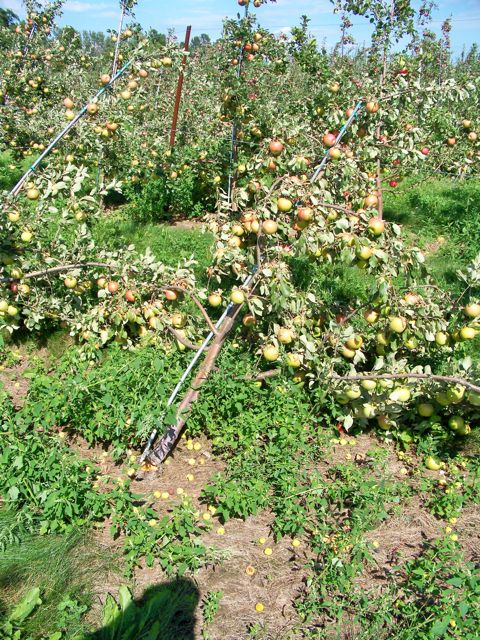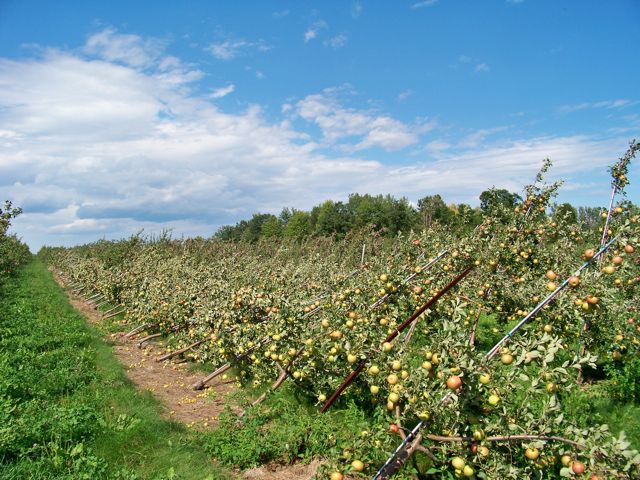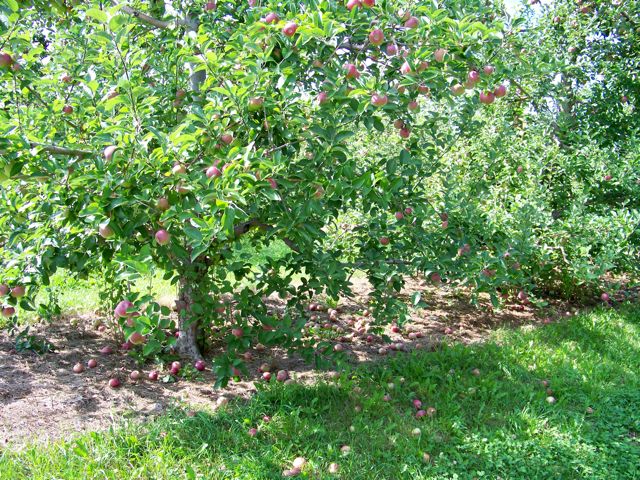Hurricane Irene severely damages Peru’s apple crop
Last Friday was a day filled with optimism at Forrence Orchards. Jamaican men were arriving to pick one of the largest crops ever. The orchard had been hard hit by a July hailstorm that damaged about 200,000 bushels of apples. Still, this year’s bumper crop was a reason for optimism. Today, that is no longer the case. Hurricane Irene’s high winds and driving rains on Sunday, August 28, 2011 left about 100,000 bushels of Forrence’s apples on the ground and thousands of trees either severely damaged or destroyed. Undoubtedly most if not all of Peru’s orchards suffered similar storm damage.
 Seth Forrence manages Forrence’s orchards along the Mannix and River Roads in Peru. He supervised the planting of the orchards’ thousands of Honeycrisp and McIntosh trees and devoted thousands of hours nurturing their development over the past several years. Needless to say, viewing the broken and bent trees is not an easy thing for Seth to do. Forrence says, “I’m finding it a little difficult to go into the orchard right now.”
Seth Forrence manages Forrence’s orchards along the Mannix and River Roads in Peru. He supervised the planting of the orchards’ thousands of Honeycrisp and McIntosh trees and devoted thousands of hours nurturing their development over the past several years. Needless to say, viewing the broken and bent trees is not an easy thing for Seth to do. Forrence says, “I’m finding it a little difficult to go into the orchard right now.”
Most of the apple trees are tethered by long wires or cable lines. The small trees planted today need support to support their abundant fruit. Unfortunately, when one tree falls several others are dragged along. Seth said “Bound together, like they are, it worked like a large sail.”
Honeycrisp trees suffered the most severe damage. While McIntosh trees tended to bend rather than break, the Honeycrisp trees tended to break very near the soil’s surface. Forrence explained, “They broke at the bud union rather than bending.” Forrence estimates that at least 10,000 bushels of Honeycrisp apples are on the ground and he hasn’t had time to count the severed trees. Planting new trees and bringing them to full production will take about five to six years. The destroyed trees were just reaching full production.
All the Forrences are well aware that apple growing is a risky business. Seth says his great grandfather Virgil H. Forrence used to say, “When you think you’ve got something, you’ve got nothing.” Seth has his own words to describe his chosen profession saying, “Apple growing is Las Vegas every day.”
Posted: August 30th, 2011 under General News, Peru/Regional History.



Comment from Joanne Kennedy
Time August 31, 2011 at 9:49 am
The devastation in the area is terrible and your photos speak a thousand words. Thanks for reporting.